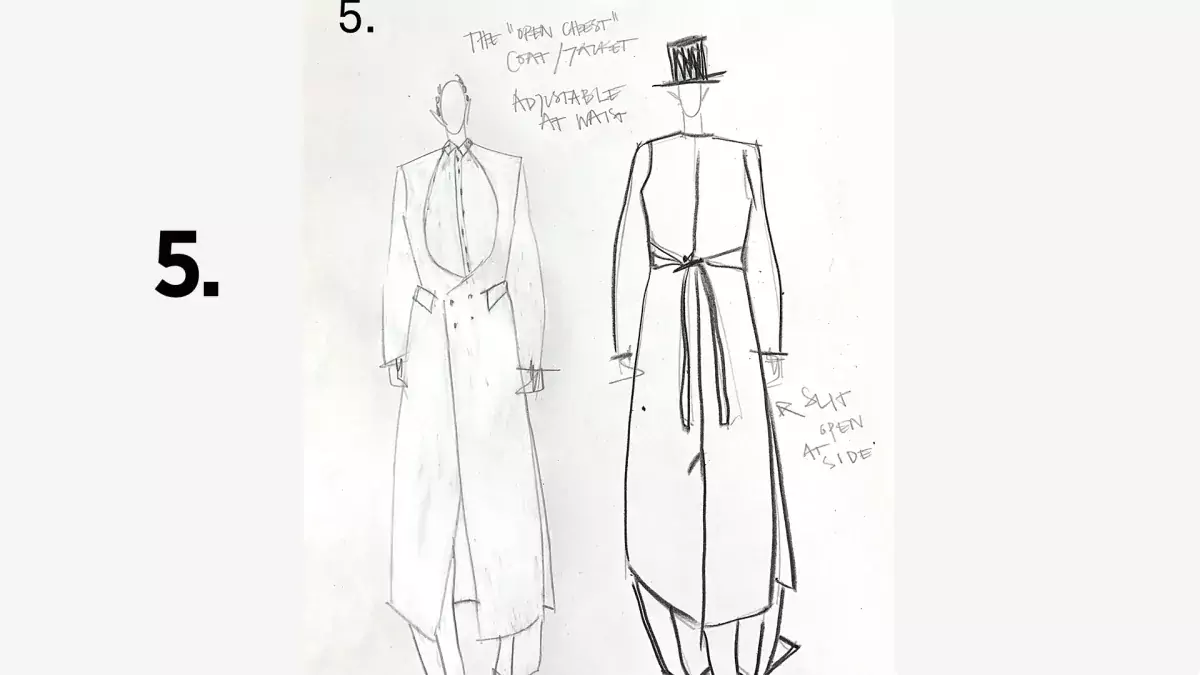IN TOTO - Prototype for conferment dress option three
The prototype on display is one of the six designs created for the new conferment dress option number three. This project is born from a vital need of inclusivity in the strict binary conferment dress code history.
The six designs stem from an intense two-and-a-half-month conferment ceremony history and design research; as well as design development and garment production. In the designs, Boucht draws inspiration from the first conferment dress uniform, gender studies, garment construction from various corners of the world and the 19th century tailoring.
The idea was to design an option that will cater for different body types as well as different gender expressions. Therefore, the displayed prototype consists of adjustable waistcoat and suit trousers, in both size as well as in shape and silhouette; by detachable sleeves and a skirt part attached with dressed buttons on the side of the leg.
The black and white colour remains, based on the conferment dress code history. White for masters and black for doctors. At the exhibition the new prototype is presented half white and half black for the viewer to see what each final dress would look like. Though - why not wear both and keep the new option as half black and half white?
As the attendee of the exhibition, you now have the opportunity to take part in the design development of the third conferment dress option. Where up to this present moment number one is a tailcoat suit and number two a dress with long sleeves, and number three yet to be decided.
And as a last note - the name of the prototype, “In toto” is originating from Latin, meaning “in entirety” or “showing you fully support something”. The name highlights the importance of inclusivity, breaking the binary and catering dress codes for all.





